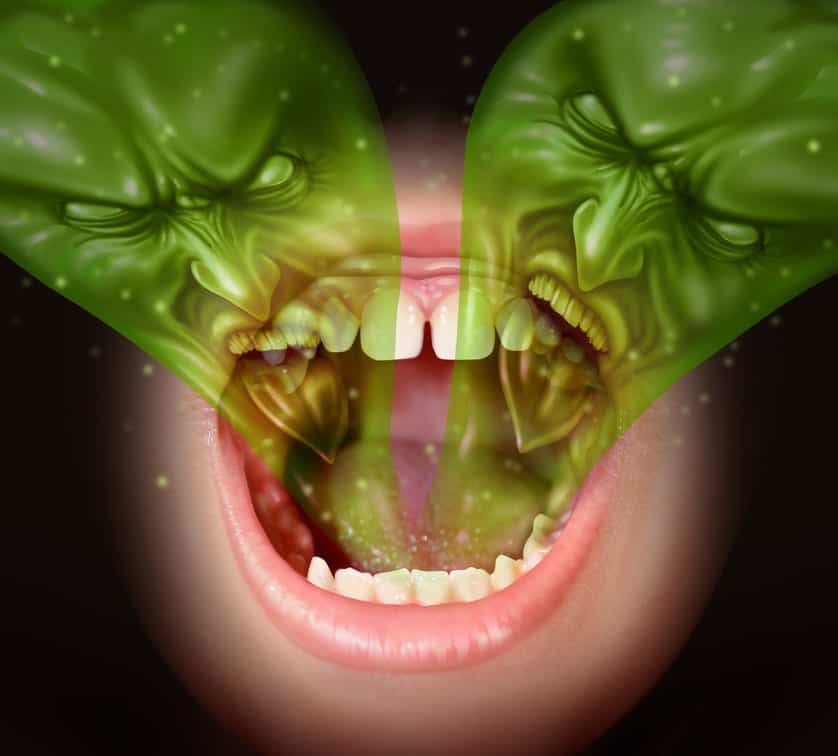Let’s set the scene. You’re a good parent who has done everything they possibly can to provide a drug-free upbringing for your teenager. You don’t drink or smoke, or at the very least you make sure those things aren’t accessible in the house. You’ve done everything you can to talk to them about illicit drug use, saying no, adapting and adjusting to peer pressure, and anything else you can think of. You even keep your prescriptions locked up and out of reach. You’ve removed every substance you can possibly think of that your child could find and abuse. It probably never occurred to you that your child could get high off of spray paint. But that’s exactly what happens, and it’s more common than you think. In fact, a huge number of teenagers abuse inhalants before they ever even consider using other drugs. They are one of the few substances more commonly abused by younger adolescents than older ones. The problem with preventing inhalant abuse by force is that it is practically impossible to remove the substances from the environment. While some are especially more potent than others, practically any substance that gives off strong fumes can be a potential inhalant. This includes substances like:
- paint
- paint thinner
- nail polish remover
- degreaser
- gasoline
- rubber cement
- felt-tip marker fluid
- spray paint
- hair spray
- spray-on deodorant
- cooking sprays
Realistically, it is highly likely you have several of those in your home right now. And it simply isn’t practical for you to “proof” your home of these things. Most of them perform necessary functions in your daily life, and even if you eliminated all of them from your home, your teen could easily and cheaply obtain more with a simple trip to the store. Luckily, that’s not the best way to circumvent abuse and addiction to these substances anyway. Here’s how to recognize the signs of inhalant abuse, understanding the symptoms abuse of these substances brings, and what to do about it.
The Signs: Recognizing Inhalant Abuse in Teens
For starters, signs of inhalant abuse have a lot in common with the signs of any other form of drug abuse or addiction. An increase in secrecy and defensiveness in your teen can be a sign that something is going on. Of course, with teenagers this could be a number of things that are perfectly normal and unrelated to any sort of substance abuse. Obviously, if you start to notice some potential inhalant materials going missing or running out faster than you might have expected, this is also something to look into. But ultimately, the best way to tell whether something is amiss is to look directly at your teen themselves. There are a number of warning signs that will stand out if your teen is abusing inhalants, such as:
- slurred speech
- lack of motor functions
- nausea/vomiting
- sedation
- dilated pupils
- loss of appetite
- glassy eyes
You may notice someone who is under the influence of a strong inhalant may give off the appearance of being drunk. The same loss of basic motor functions that typifies heavy alcohol use is common to heavy inhalant abuse. You may also notice some more physical signs, particularly if a very strong or corrosive inhalant is being used. Many inhalants can cause blisters on the skin on and around the nose, especially if the inhalant is being huffed. “Huffing” involves soaking a rag in an inhalant substance and then covering the nose and/or mouth with it. Pay attention for distinct marks on the face that may have been left from paint or other colored substances as well. If they can’t explain where the marks came from, and it matches up with some of these other symptoms, it may be worth looking into further.
The Symptoms: What are the Negative Effects of Inhalant Abuse in Teens?
Okay, so you’ve identified the warning signs of inhalant abuse. But how worried should you be, really? I mean, we’ve all gotten a sniff or two of glue or gasoline from time to time, right? How bad can it be, really? Without being too dramatic, the answer is simple: it’s extremely dangerous. Not only are the long-term health risks severe, but it may not even get to that point. Roughly 200 Americans a year die of inhalant overdose – a phenomenon known as Sudden Sniffing Death Syndrome. Of those, about 22% are first-time users. It’s not common for this to happen, but 200 deaths a year are 200 deaths too many, especially when almost a quarter of those are the result of a first-time use. But while death may be the most shocking and harmful symptom of inhalant use, it is far from the most common. And the long-terms effects of inhalant use are not to be taken lightly, even if they aren’t immediately fatal. The effects of this use build up over time and can cause serious brain damage over time. Other long-term inhalant side effects can result in:
- muscle spasms and weakness
- inflexibility and loss of balance
- slowed movement
- blackouts
- chronic pain
- liver or kidney damage
- reduced blood cell production
- weakened immune system
- reproductive complications
- numbness in parts of the body
- hearing and vision loss
- leukemia
Really, this seems like a long list, but it’s far from exhaustive. There are a lot of different substances that can be used as an inhalant, each with distinct effects. But they all have long-term effects on the brain and body, and if overused, can be fatal. The big difference between inhalants and other addictive substances is that the “high” provided by an inhalant lasts only a few minutes. As a result, many regular inhalant users tend to use several times in succession in order to maintain the high. Naturally, each successive use causes more compounding damage, and the frequency of these uses can make it especially dangerous. While the long-term effects of inhalant use are certainly damaging, the short-term effects aren’t much better. There are a lot of similarities to alcohol abuse, with dizziness, slurred speech and a loss of basic motor function topping the list. But even if you recognize the symptoms, what are you supposed to do about it then?
What To Do if Your Teen is Using Inhalants
Now you’ve seen the signs and recognized the symptoms. What do you do with that? Well, let’s take a step back. By far the best form of treatment for inhalant use is prevention. And the best way to prevent this from being an issue is to make sure you maintain open lines of communication with your teen. Make sure to provide them a safe, open opportunity to talk to you about anything without judgment or repercussions. Be honest with them about the realities of inhalant use – the dangers of it, the effects, and your expectations of them. The more information they have on the reality of inhalant use, the more likely they are to avoid it. It’s likely that a teen faced with inhalant use will recognize that something is wrong, but if they expect you to punish them for it, rather than hear them out, it is much more likely they will keep their use hidden and continue it, rather than come to you for help. On the other side of things, without a proper introduction to the facts, your teen may not even recognize that inhalant use is a bad thing. Make sure you’ve talked to them about the risks of inhalant use so that they have the information they need to make the right decision if and when it comes up. Simply planting the initial reaction of saying no to an inhalant can make all the difference. But what if you’re beyond that point? If you find your teen sniffing, huffing or inhaling a substance, make sure to get them to fresh air, well away from the substance they’ve been using. If they’re under the influence and breathing when you find them, the fresh air should clear their head in a few minutes. If it’s a more serious episode, in which the user is unconscious or not breathing, call for emergency medical assistance immediately. You may well be racing against the clock. It is important to note that inhalants can be addictive. Teens who use inhalants often fall victim to the same symptoms of addiction that an alcoholic or drug addict would face, and that means getting them to stop using may not be a simple affair. Remember that drug addiction is a disease. Your teen may not be able to just stop using because you tell them to, because the addicted brain has been hardwired to prioritize drug use. A fair percentage of inhalant users will actually suffer from withdrawal symptoms if they stop using. These symptoms are not dangerous in the way that alcohol withdrawal symptoms are, but they are extremely unpleasant and may make it very difficult to quit using. Is your teen having trouble with inhalant abuse or having trouble quitting? Consider getting professional help. The first step is an addiction assessment with a qualified counselor. If there is a problem, you can move forward from there and stop the problem before it gets worse.




